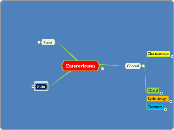jonka R G 16 vuotta sitten
583
B3: Enteroviruses

jonka R G 16 vuotta sitten
583

Lisää tämän kaltaisia
Enteroviruses are picornaviruses.
Other picornaviruses include:
Blocks uncoating step
Not FDA-approved
Seasonality?
Tropical
Year-round
Temperate
Summer, autumn
Due to water exposure
Common in children
DCC
DCC = Day care centers
Widespread
Human host needed
No known animal reservoirs
Fecal-oral
Contaminated water
Eradicated in U.S.
Rhinovirus-like "colds"
Hepatitis A disease
Herpangina
Herpangina: an infectious disease, esp. of children, characterized by a sudden occurrence of fever, loss of appetite, and throat ulcerations, caused by a Coxsackie virus.
Hand-foot-and-mouth disease
Self-limiting
Blister-like rash on hands, feet
Cold-like symptoms
Pancreatic (diabetes) and resp. infections
Polio-like paralysis
Pleurodynia
Cardio
Pericarditis
Myocarditis
CNS
Encephalitis
Viral meningitis
Sensitive
Formaldehyde
Hypochlorite
Resistant
Common disinfectants
Low pH
67 serotypes
Cultured in primates
Shed in feces
Grow at 37 degrees
GI tract
Infection time course
Infection time course
Icosahedral
Small
Molecular
Infectious mRNA to polyprotein P1
Untranslated regions at both termini
1st third of polyprotein is P1 (capsid)
No easy way to summarize:
Multiplication mechanism:
Viral encoded RNA polymerase
VPg protein
5' end
VP1-4 capsid proteins
No specific AV
Complete Eradication?
Live Sabin
Poliomyelitis
Spread to other house members
Can be good or bad
Economical, stable, administered in field
Confers intestinal immunity (IgM)
Killed Salk
Preferred
Induces humoral immunity
Safe for immunodeficient
No viral replication
2-10 days
Exposure postponed to older children, adults
Disease more severe
Improved sanitation correlated with increased epidemics
Children w/ poor hygiene & sanitation
4-fold Ab increase
Meningitis-like symptoms
Stiff neck
Head ache
Malaise
Fever
Symptoms
Non life-threatening
Unlike ALS
ALS-like
30-40 years after acute
B
A